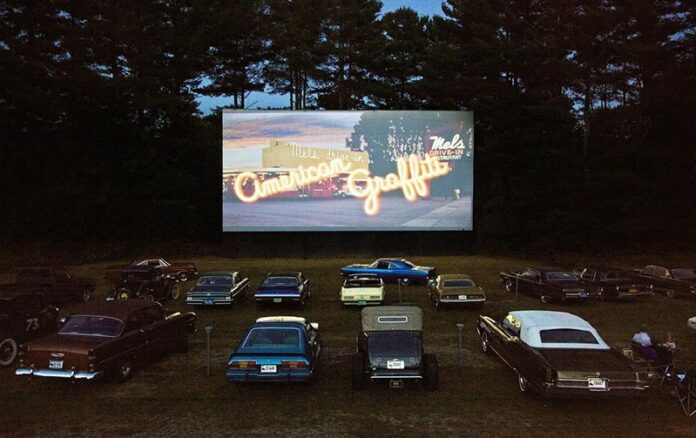On the occasion of the anniversaries of the Pacific Sun and its sister paper, the North Bay Bohemian, consider that both outlasted their model, New York’s Village Voice, which perished this August.
The New York paper, founded by Norman Mailer and others in 1955, made its fame dealing with the matters that the other Manhattan dailies wouldn’t touch, such as drugs, feminism and anti-war activism. The paper waxed and waned with various countercultures, surviving through decades of beatnik, hippie, freak and yuppie readers, finally expiring in the era of Yelp, Tinder, and the artisanal pickle. Imitating both the Voice‘s example (bravery, frankness and prioritizing local issues) and its flaws (insularity, self-indulgence, self-satisfaction), dozens of smaller tabloids sprung to life in every funky town or college ghetto in the U.S.A.
As New York grew whiter and richer, the Voice suffered from years of mismanagement. It changed hands and in 2005 became part of the New Times chain out of Phoenix. While the Phoenix New Times deserves honor for its heroic reporting on the brutality of Sheriff Joe Arpaio, the chain itself proposed an apolitical, one-size-fits-all model for the papers they engulfed and devoured. The Voice survives in name only as part of the Voice Media Group, the remains of a media group that once faced scrutiny by the Justice Department for the way it invaded markets.
As for the Voice itself, it dwindled, eventually being placed into a sort of online-only hospice before the plug was pulled this summer.
The VV was perhaps one more casualty of what critic A. S. Hamrah describes in his new book The Earth Dies Streaming as “Trumpancholia”—a global malady “afflicting most of the planet’s population, who have traded the things they used to enjoy for the constant monitoring of Trump’s reality-TV spectacle.”
Today, there isn’t a newspaper around that’s not trying to do more with less, and not a writer for them that isn’t coping with smaller spaces, shorter attention spans and less time to rearrange words. Still, the VV‘s model created careers as something that sounds patronizing: an “alternative journalist.” It was—and for the ones left, still is—a gift to be able to write as you please, and to be able to use everyone’s favorite four-letter words in matters where nothing else works. In this line of journalism, you don’t have to button your collar, or worry about what the Baptists would think, or, when writing about the arts, pretending to be bulldog, gruffing about these pretentious academics or those long-haired hippies.
[page]
With the death of the Voice, the Pacific Sun is now the most long-lasting alternative weekly in the country, having persisted since 1963. Through Marin and Sonoma’s agricultural land trusts and the fight against the mega-suburb Marincello—a housing development proposed atop the Marin Headlands—locals have fought bravely against what Wendell Berry called “the unsettling of America,” the shutting out of small farms in favor of development and mass agriculture. Nancy Kelly and Kenji Yamamoto’s 2013 documentary Rebels with a Cause shows us how it could have gone, with the creation of the planned city of Marincello. This development was eventually fended off locally by activists, and prevented at the federal level by the work of Congressman Clem Miller. Imagine a parallel universe where the peerless seascapes of the Golden Gate National Recreation Area and Point Reyes are one big sprawl of shopping centers and mansions for yachtsmen.
The Pacific Sun was concerned with matters of terroir from the beginning. The Stinson Beach–based founders Merril and Joann S. Grohman were dedicated small-scale dairy farmers and authors of books on bovine culture; Ms. Grohman wrote a still-in-print manual on keeping a cow at your homestead.
My business isn’t tending cattle; it’s watching turkeys. My back-of-the-book end of it, mostly, is trying to find what is good about popular films and popular about the good ones. Streaming is still something to cope with: most of the companies in charge are poor at differentiating what they have, cagey about what’s trending, indifferent about promoting it.
For the film critics today, a lot of the previewing is done online, which ain’t optimum. I’d prefer crowding into a Tuesday-morning bargain matinee with other pennysavers. Every now and then, it’s a plunge into the dim interior of the Variety Club screening room on Market Street, where I’ve been previewing movies for 35 years or so—in the back row on the cushy seats where the Pacific Sun‘s Stephanie von Buchau used to sit, cane by her side, until her death in 2006. She was wise, imperious and an expert on opera, and I’m rather glad I don’t know what she would have thought of me following up for her.
I’ve had the pleasure of writing about irreplaceable local institutions such as the Smith Rafael Theater, and the Mill Valley Film Festival. For the Bohemian, where I’ve been writing somewhat longer, I enjoy finally having an excuse to visit the Charles M. Schulz Museum in Santa Rosa, and covering something irreplaceably local, the Cotati Accordion Festival, which brings virtuosos from all over the globe, as well as amateurs who squeeze out “Lady of Spain.” This is my favorite place in the world.
I’ve been lucky to work with talented editors, none of them J. Jonah Jameson–style barkers, whom I’ll list on this anniversary: Greg Cahill, Gretchen Giles, Tom Gogola, Stett Holbrook, Molly Oleson and Charlie Swanson. And all thanks to publisher Rosemary Olson, and CEO and executive editor Dan Pulcrano, who bought the Bohemian in 1995 and the Sun in 2015 and who keeps the roof on, as he likes to say. He has run newspapers for almost as long as I’ve been writing for them, and that’s one long time.











